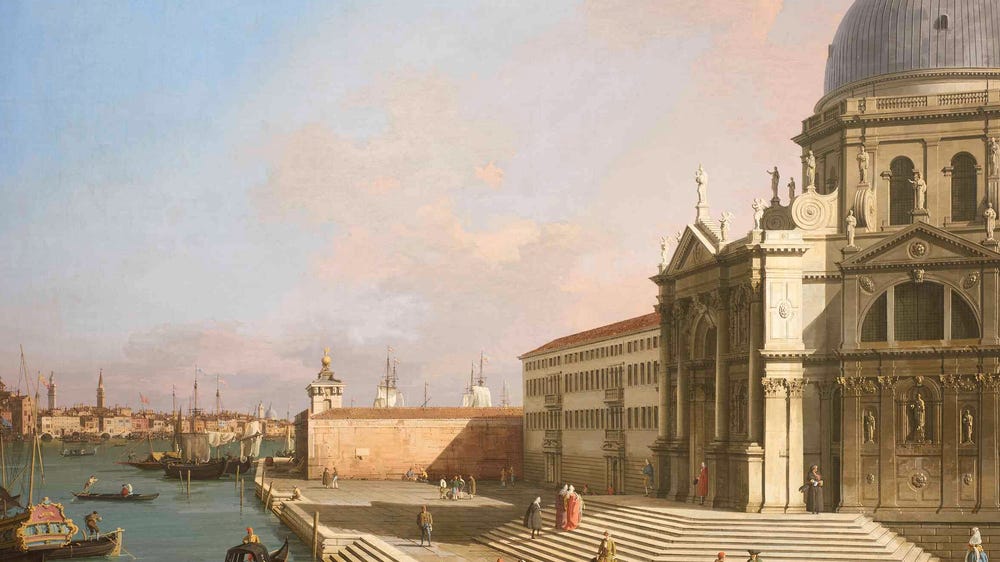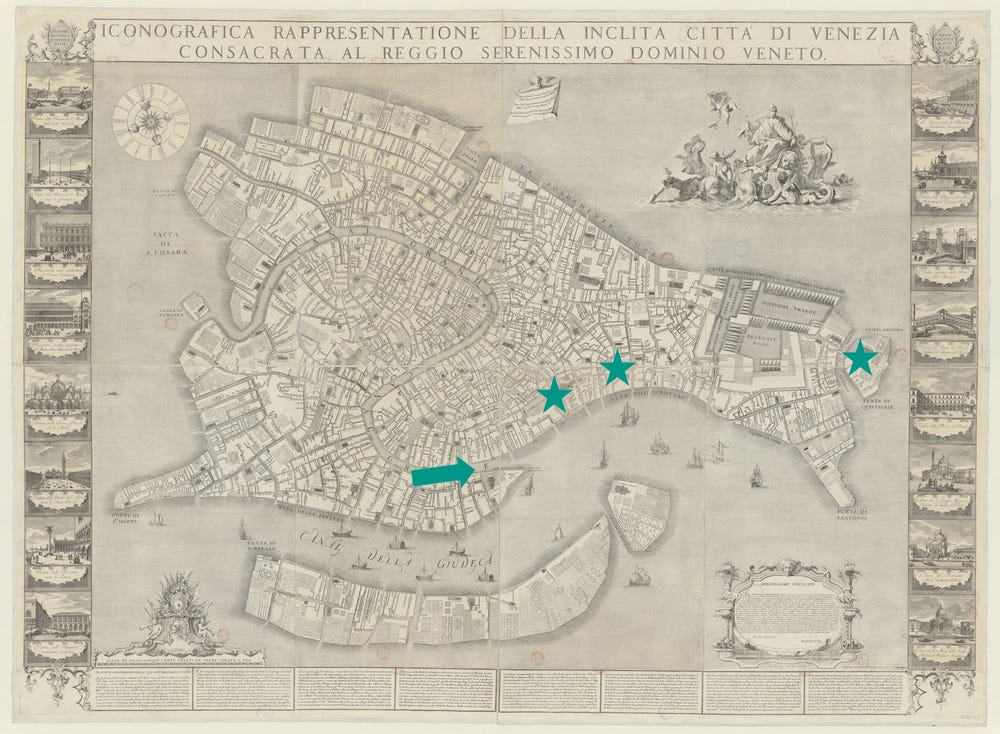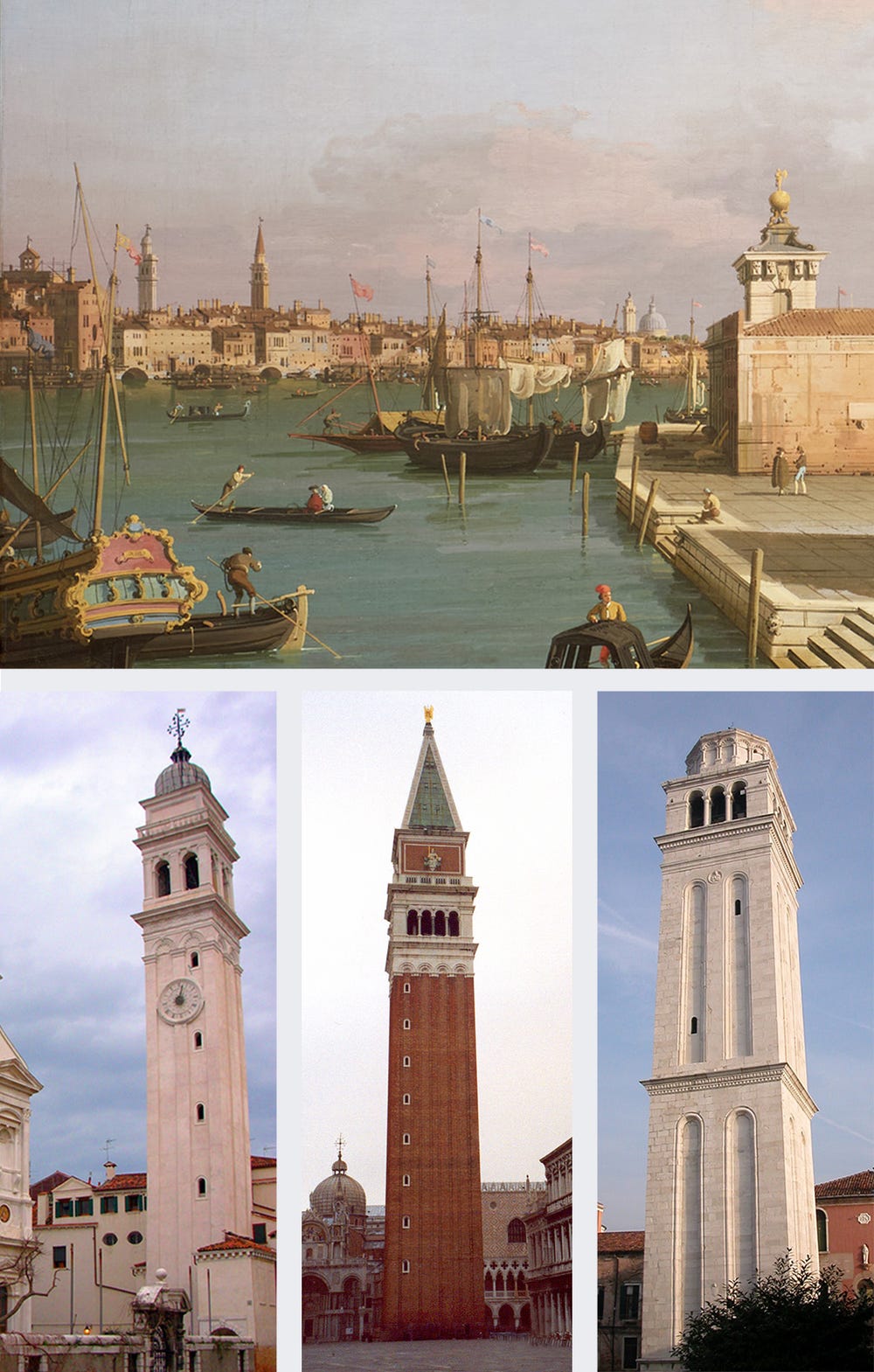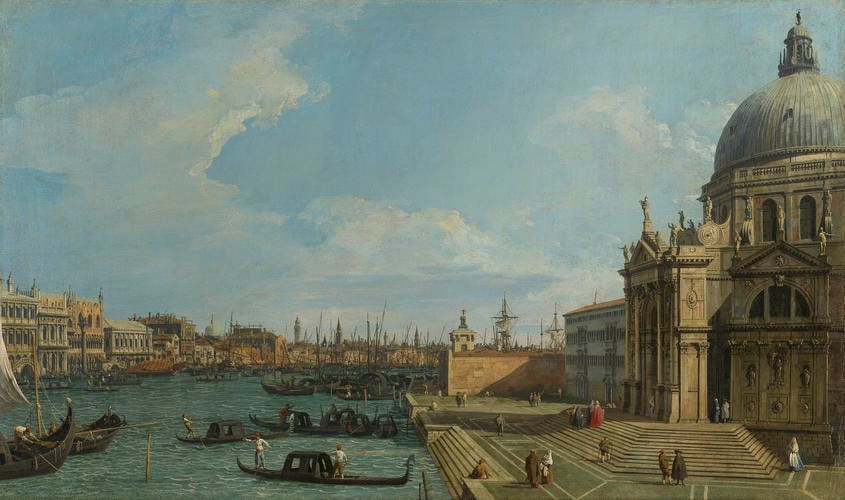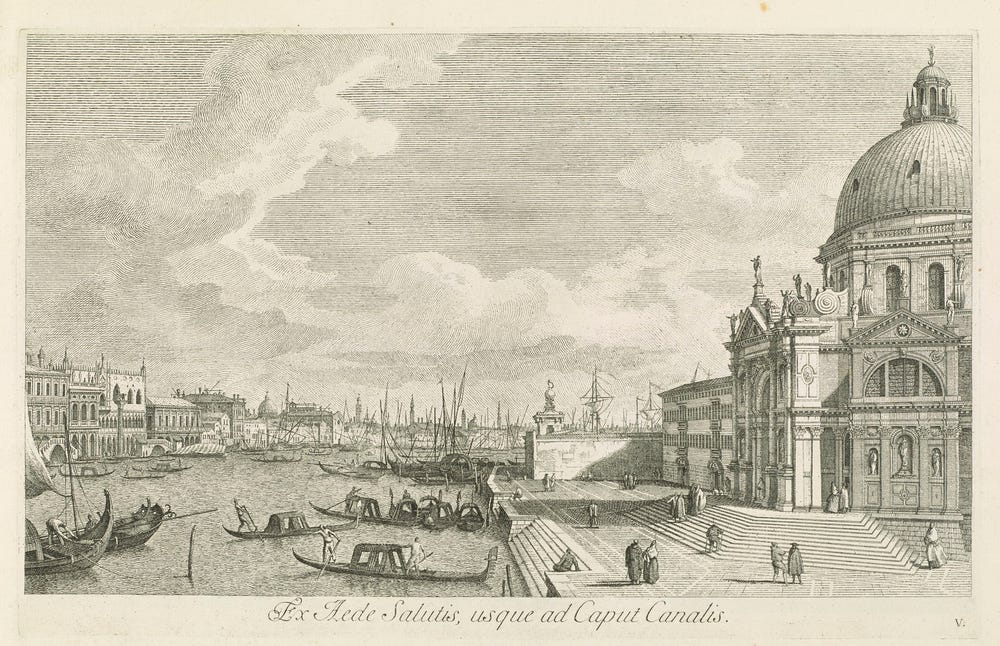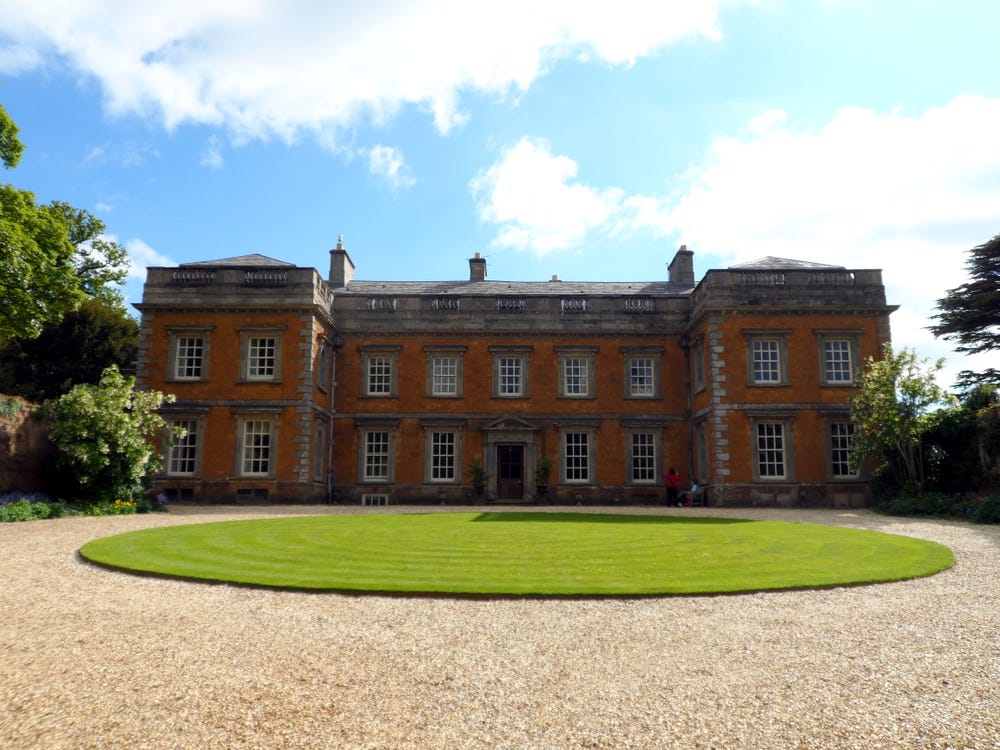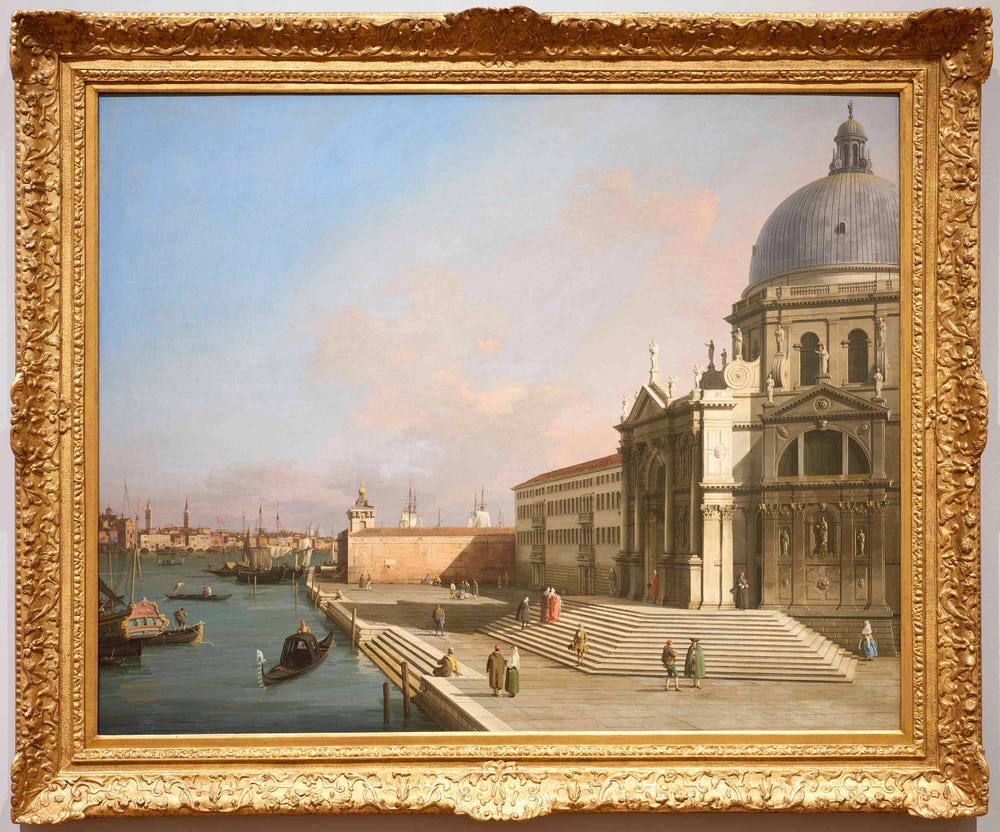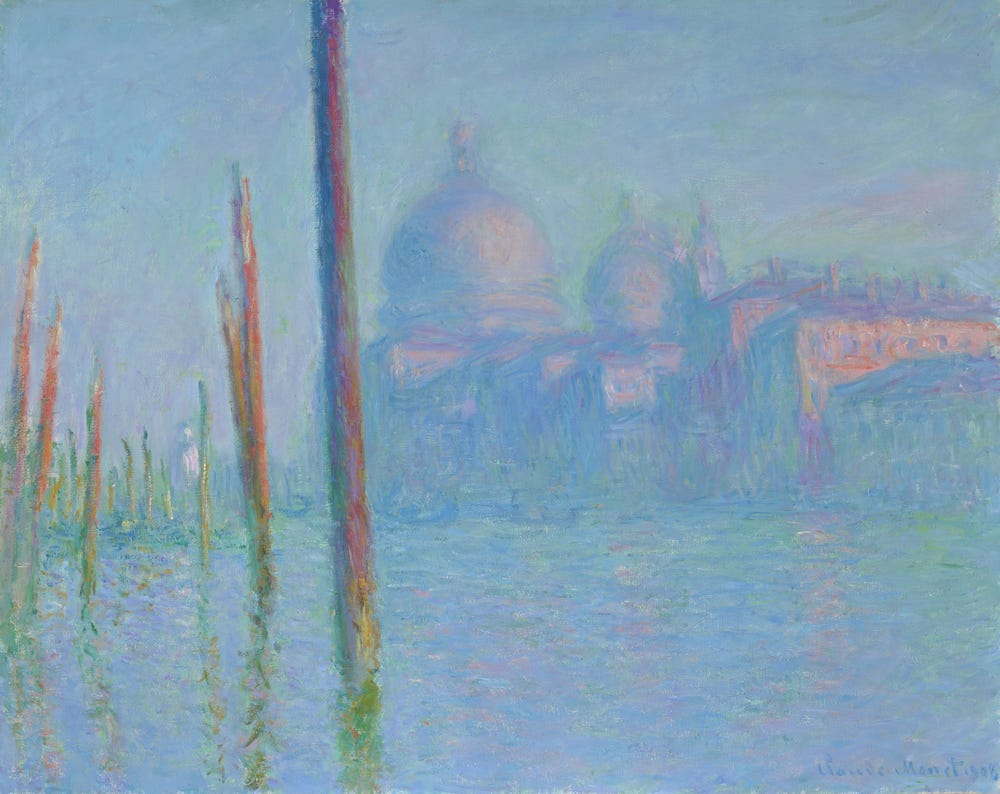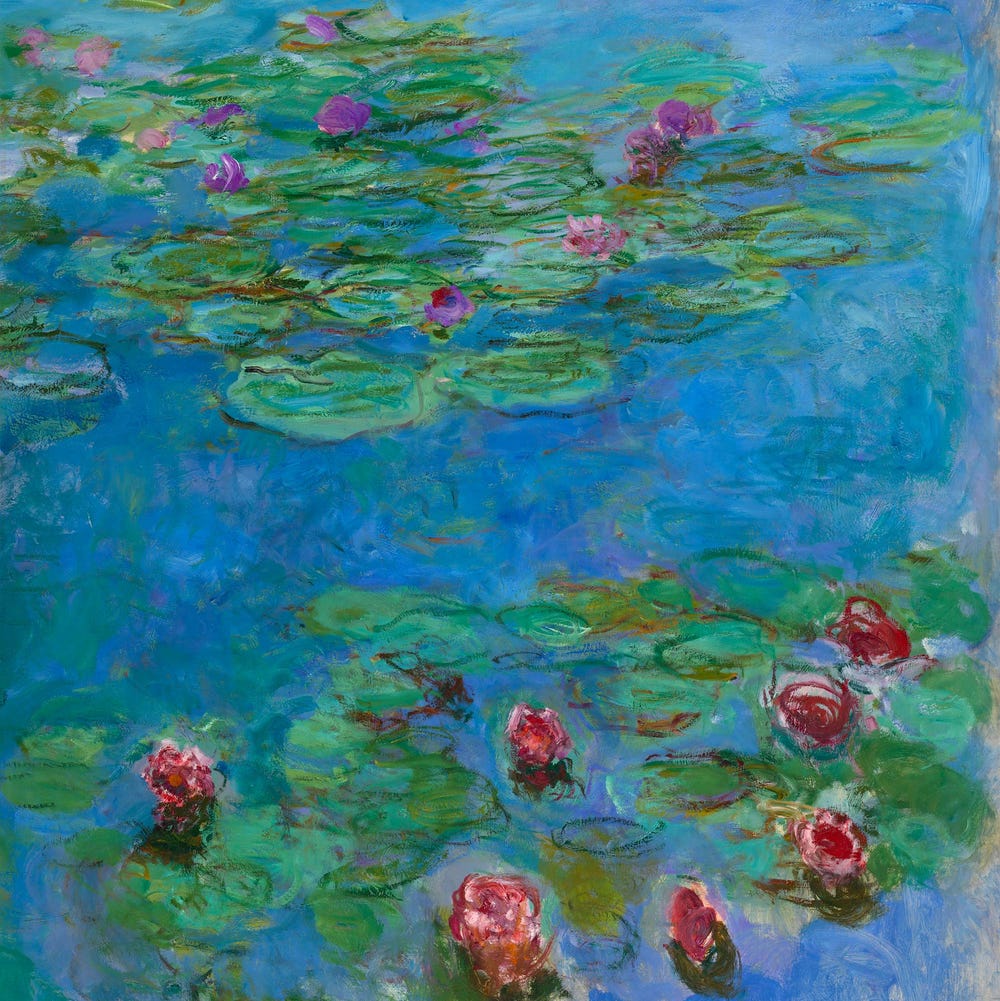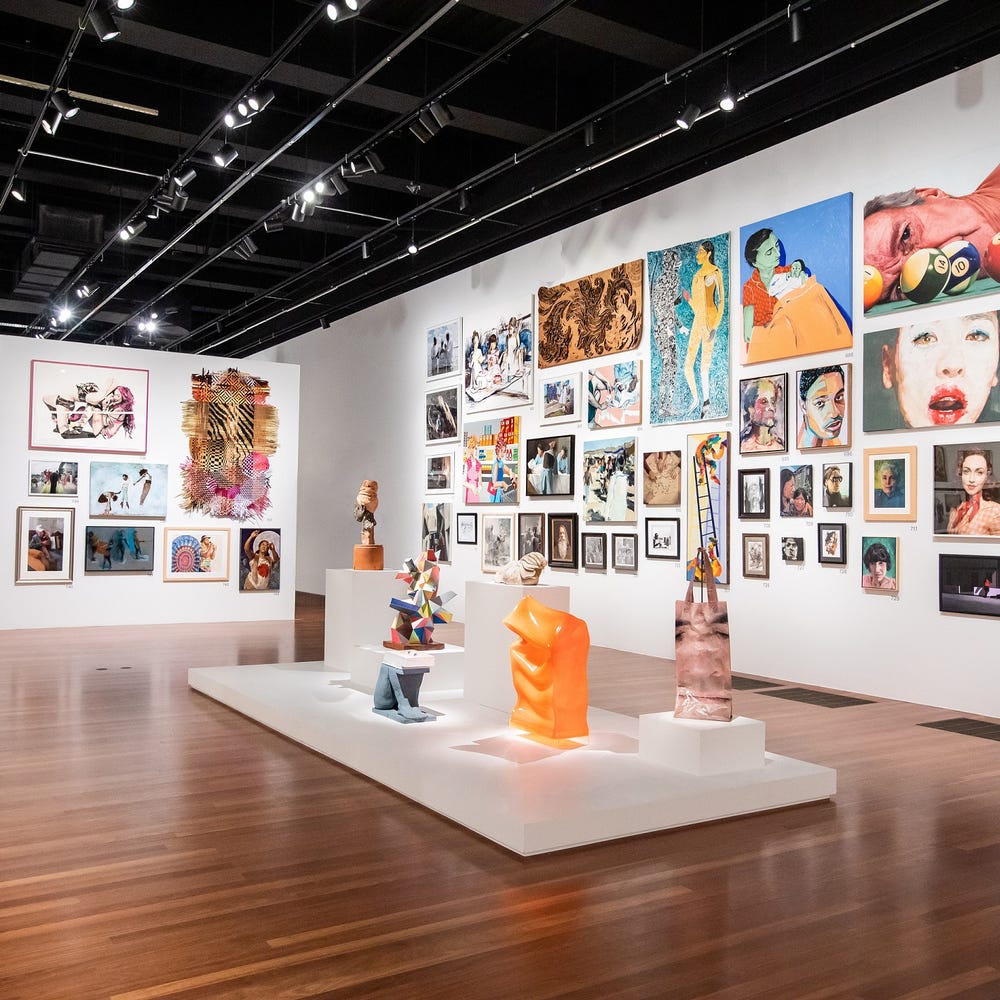Canaletto (Italian, 1697–1768), Venice, the Grand Canal looking East with Santa Maria della Salute (detail), 1749–1750. Oil on canvas, 52 1/2 x 65 3/8 in. (133.4 x 165.4 cm). Fine Arts Museums of San Francisco, Gift of Diane B. Wilsey. Photograph by Jorge Bachman
Views of Venice, its canals, public squares, and churches, are among the icons of 18th-century European painting. Giovanni Antonio Canal, called Canaletto (1697 – 1768), was the master of the genre. The monumental Venice, the Grand Canal looking East with Santa Maria della Salute, 1749 – 1750, is a transformative addition to our collection, presenting a celebrated Venetian landmark as seen (and remembered) by the greatest view painter of the era. Taking as its principal subject the church of Santa Maria della Salute, built in an act of civic gratitude following the end of an outbreak of plague that killed some 50,000 Venetians, Canaletto’s picture offers contemporary viewers a symbol of hope and resilience as we emerge from our own pandemic.
1729 map of the Venetian lagoon with an arrow indicating Canaletto’s vantage for Venice, the Grand Canal looking East with Santa Maria della Salute and three stars indicating the Piazza San Marco, San Giorgio dei Greci, and San Pietro di Castello. Image courtesy of gallica.bnf.fr / Bibliothèque nationale de France
Bathed in late afternoon light, Canaletto’s composition looks eastward down the Grand Canal, past the stately church of the Salute (see recent conservation projects here). This basilica, the masterpiece of Baroque architect Baldassare Longhena (1598 – 1682), was built on a central plan with a soaring dome at its crossing. Consecrated in 1687, the Salute quickly became, and still remains, an icon of the “most serene republic.” In the 1729 map above, an arrow indicates Canaletto’s chosen vantage. As you can see, the Salute sits on a point of land at the mouth of the Grand Canal known as the Punta della Dogana for the low-slung customs house at its tip. Today serving as a venue for contemporary art exhibitions, the Dogana appears as the pinkish building just beyond the Salute in Canaletto’s scene. Beyond it lies the bay, where sailboats and gondolas glide across the placid water, while Venetians of various social classes mingle in the foreground. On the horizon, the bell towers of San Giorgio dei Greci, the Piazza San Marco, and the church of San Pietro di Castello float like buoys. Each landmark is carefully cited and distinguished from the others, but fully half of Canaletto’s canvas is given over to a vast, radiant sky, its clouds tinted pink by the approaching sunset.
(top) Venice, the Grand Canal looking East with Santa Maria della Salute, detail showing the bell towers of San Giorgio dei Greci, the Piazza San Marco, and San Pietro di Castello. (bottom) Present-day bell towers. All images via Wikimedia Commons
For all its seeming architectural and geographic precision, this picture was not painted in Venice at all but in London, on the basis of Canaletto’s prior views of the same site. Some critics, in fact, have found fault with the artist for misremembering the number of steps leading up to the church. He had first painted this landmark around 1723, returning to it again and again in subsequent decades. Perhaps his most famous rendition of the subject is a canvas of comparatively modest dimensions painted for Joseph Smith during his service as British consul in Venice (below). It was one in a series of 12 Canalettos in Smith’s collection engraved by Antonio Visentini (1688 – 1782) for a 1735 book of Venetian views. Visentini’s print (below) may have served as a memory aide to Canaletto when composing our picture in London, many miles from home.
Canaletto (Italian, 1697–1768), The Grand Canal with Santa Maria della Salute towards the Riva degli Schiavoni, c. 1729-30. Oil on canvas, 18 3/4 x 31 1/2 in. (47.7 x 80 cm). Royal Collection Trust, RCIN 400520. Royal Collection Trust / © His Majesty King Charles III 2022
Antonio Visentini after Canaletto (Italian, 1697–1768), Entrance to the Grand Canal Looking East. Engraving, published in Urbis Venetiarum Prospectus Celebriores (Venice: 1735). Windsor, Royal Collection, RCIN 809031 Royal Collection Trust / © His Majesty King Charles III 2022
A native of Venice, Canaletto left in 1746 for Britain, where he had developed a loyal following among the wealthy young Englishmen who passed through Venice on their grand tours of Italy. One such client was William Holbech (c. 1699 – 1771), the owner of a country house in Warwickshire called Farnborough Hall (below). Having acquired two earlier Venetian views by Canaletto (today in Augsburg and Ottawa) during his grand tour, Holbech commissioned our painting and its pendant (or companion piece), a view of the Bacino di San Marco from the Piazzetta, in 1749 or 1750. He displayed all four in the dining room at his estate, surrounded by elaborate plasterwork and interspersed with views of Rome by Canaletto’s contemporary Giovanni Paolo Panini (1691 – 1765). Together, the Venetian and Roman views transformed the dining room of Farnborough Hall into a kind of grand tour in microcosm, a gathering of famous Italian sights. Today the room is decorated with modern copies.
Farnborough Hall, Warwickshire. Image by Nicholas Jackson via Wikimedia Commons
Now on view at the Legion of Honor, Venice, the Grand Canal looking East with Santa Maria della Salute joins a beautiful group of works by Canaletto’s contemporaries Tiepolo, Longhi, and Panini. But these aren’t the only related works in our collection. Canaletto’s view joins another landmark depiction of the very same monument, painted over a century later: Claude Monet’s glimmering late Impressionist masterwork, The Grand Canal, Venice, 1908
Canaletto (Italian, 1697–1768), Venice, the Grand Canal looking East with Santa Maria della Salute, 1749–1750. Oil on canvas, 52 1/2 x 65 3/8 in. (133.4 x 165.4 cm). Fine Arts Museums of San Francisco, Gift of Diane B. Wilsey
Claude Monet, The Grand Canal, Venice, 1908. Oil on canvas, 28 13/16 x 35 5/16 in. (73.2 x 89.7 cm). Fine Arts Museums of San Francisco, Gift of Osgood Hooker, 1960.29. Photograph by Randy Dodson
Venice, the Grand Canal looking East with Santa Maria della Salute comes to our collection thanks to the generosity of board chair emerita Diane B. Wilsey, who funded this purchase from the Ann and Gordon Getty collection on the eve of its dispersal at auction.
Text by Emily Beeny, curator in charge of European paintings.
